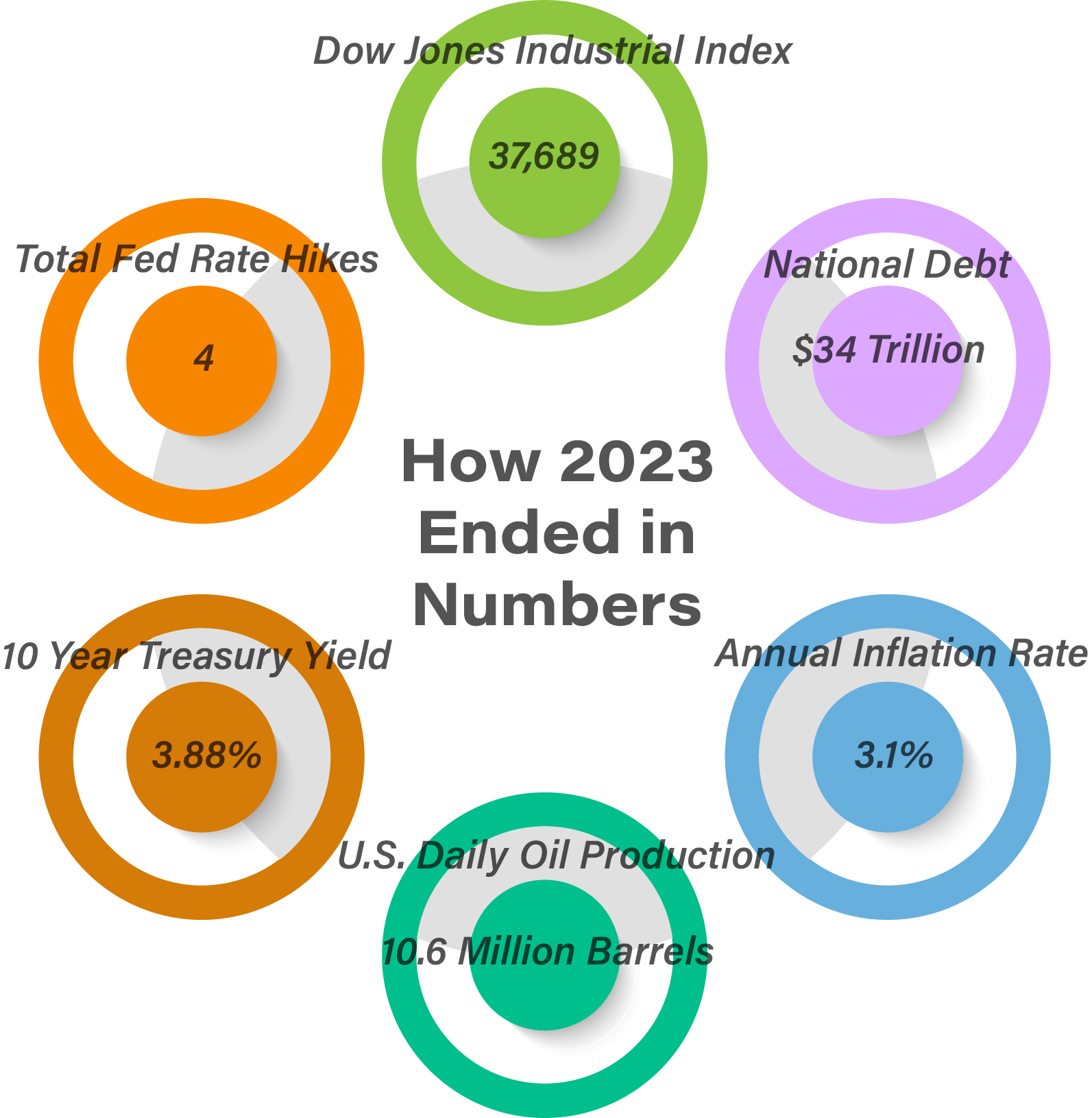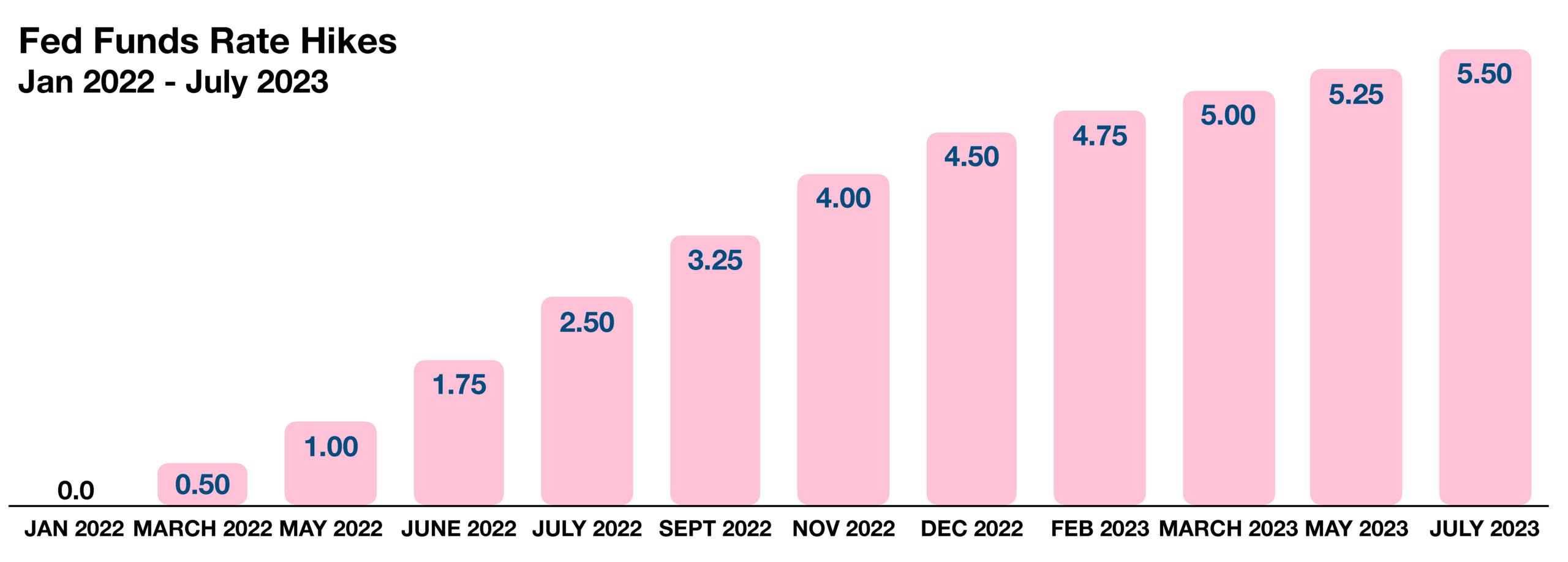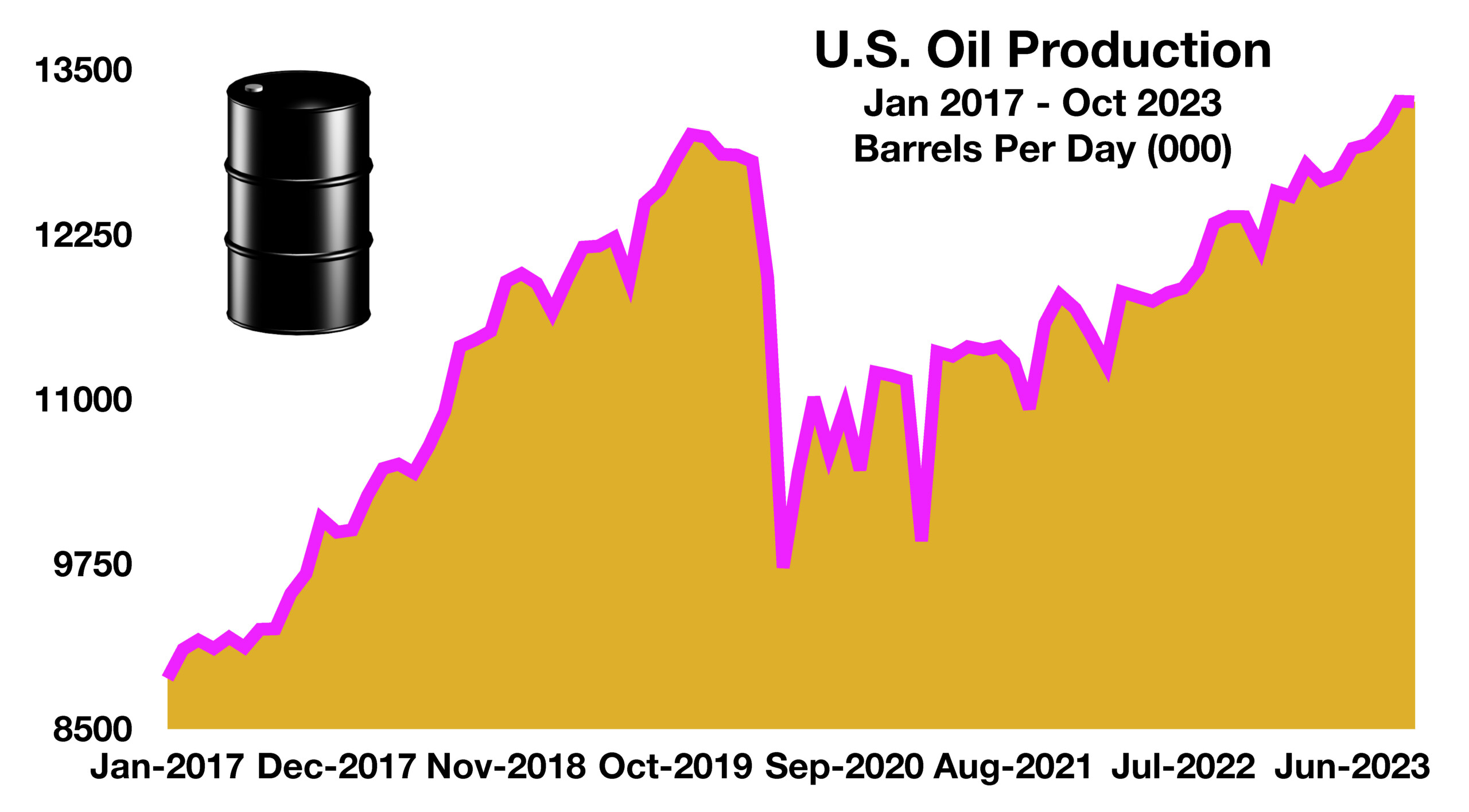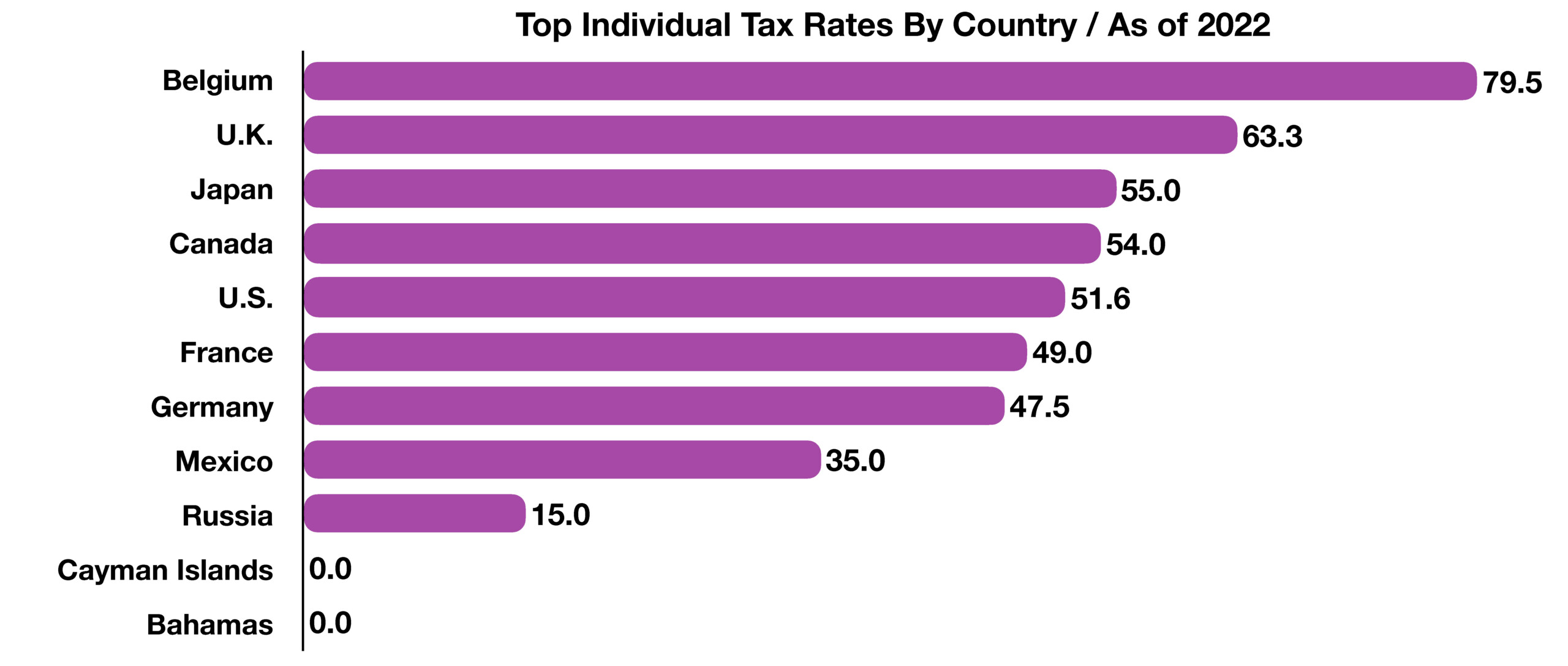
W.P. "Bill" Atkinson, III
Certified Financial Planner TM / Attorney
Access Financial Resources, Inc.
3621 NW 63rd Street, Suite A1
Oklahoma City, OK 73116
(405) 848-9826
Stock Indices:
| Dow Jones | 38,996 |
| S&P 500 | 5,096 |
| Nasdaq | 16,091 |
Bond Sector Yields:
| 2 Yr Treasury | 4.64% |
| 10 Yr Treasury | 4.25% |
| 10 Yr Municipal | 2.53% |
| High Yield | 7.63% |
YTD Market Returns:
| Dow Jones | 3.47% |
| S&P 500 | 6.84% |
| Nasdaq | 7.20% |
| MSCI-EAFE | 2.23% |
| MSCI-Europe | 1.23% |
| MSCI-Pacific | 3.98% |
| MSCI-Emg Mkt | -0.27% |
| US Agg Bond | -1.68% |
| US Corp Bond | -1.67% |
| US Gov’t Bond | -1.59% |
Commodity Prices:
| Gold | 2,051 |
| Silver | 22.87 |
| Oil (WTI) | 78.25 |
Currencies:
| Dollar / Euro | 1.08 |
| Dollar / Pound | 1.26 |
| Yen / Dollar | 150.63 |
| Canadian /Dollar | 0.73 |
Macro Overview
This past year witnessed one of the most ambitious executions of interest rate hikes by the Federal Reserve in recent history, with rates rising four times in 2023. Optimism swarmed throughout the markets as equities and bonds rose in a rare convergence. Stocks and bonds have historically tended to drift in opposite directions.
Inflation-themed concerns during 2023 have led to more deflationary concerns heading into 2024. The Fed’s attempts in combating inflationary pressures translated into hard-landing concerns as recession fears evolved due to rising rates. The labor market continues to challenge the Fed’s possible easing rate policy in 2024, as wage pressures continue to abound.
Geopolitical tensions carried over from 2023, as the invasion of Ukraine and the Middle East conflict continue to weigh on financial markets. The two hostilities continue to hinder supply constraints in various regions as well as provoking uncertainty. Russia’s invasion of Ukraine directly affects Europe while the Middle East conflict is disturbing oil shipping throughout the region.
Bank failures occurring at the beginning of 2023 made it one of the worst years for bank collapses in history. Three of the top five bank failures ever occurred in 2023, as the demise of Silicon Valley Bank, Signature Bank, and First Republic Bank totaled over $350 billion in assets.
Many analysts believe that the performance of the S&P 500 Index in 2023 was not truly representative of actual market characteristics, due to a concentration in just seven stocks known as the magnificent seven. Roughly half of the performance for the S&P 500 Index in 2023 was attributable to these seven stocks, with the remaining 493 stocks in the index representing the balance of the return for 2023.
The U.S. exported approximately 75% of total domestic oil production in 2023, supplying both developed and emerging countries worldwide. Supply constraints for oil may pose a challenge as a result of worsening shipping disruptions in the Middle East, affecting prices globally.
Total Federal Debt for the U.S. reached $34 trillion at the end of 2023, up from $27.6 trillion at the beginning of 2021. Rising rates this past year have added additional debt costs for the U.S. government as interest expenses on outstanding U.S. debt has risen substantially. (Sources: Fed, BEA, Treasury Dept., EIA)


 Wind turbine blades, colossal and challenging to manage, contribute to a growing waste stream. “Currently, about 7,000 blades are scrapped per year in the United States.” A comprehensive “composite circular economy” remains elusive despite industry discussions on end-of-life solutions. Legislative gaps allow landfill disposal of wind blades, raising doubts about the sustainability commitment of some wind energy backers.
Wind turbine blades, colossal and challenging to manage, contribute to a growing waste stream. “Currently, about 7,000 blades are scrapped per year in the United States.” A comprehensive “composite circular economy” remains elusive despite industry discussions on end-of-life solutions. Legislative gaps allow landfill disposal of wind blades, raising doubts about the sustainability commitment of some wind energy backers.

 Jase Medical offers many customizable options, but one is the Jase Case where customers receive 5 types of antibiotics, a case, and a guide booklet. According to their website, the 5 antibiotics are as follows:
Jase Medical offers many customizable options, but one is the Jase Case where customers receive 5 types of antibiotics, a case, and a guide booklet. According to their website, the 5 antibiotics are as follows: